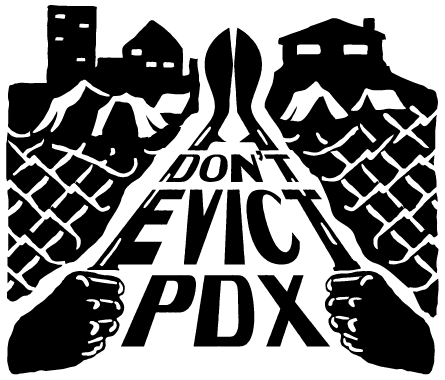Land Back Statement
Many tribes live in what is now Portland, including the Multnomah, Chinook, Tualatin, Cowlitz Clatskanie, Kalapuya, and Clackamas and have since time immemorial. Many more, including the Wasco, Warm Springs, Yakima and Siletz, have relationships of trade or other relationships to this land. This place is a meeting place for tribes all along the Columbia River, from its mouth in what is called Canada and all of its tributaries. It is a continuation of the way that Tribes have come here to trade goods, medicine, food, language, and culture for thousands of years. In addition to the nine federally recognized tribes in Oregon and all of those nations’ citizens and members, Portland is home to approximately 60,000 Urban Native Americans that represent more than 380 tribal affiliations.
When white colonizers came and created the state of Oregon, they enacted a deliberate genocide against Native people using everything from land enclosure, military and sexual violence, to boarding schools, xtianity, and smallpox. The goal was to eradicate Native people. The dispossession of Native people of their land was the first eviction and the legal precedent for all evictions and displacements that have happened here since.
Evictions today happen through many mechanisms, so did the dispossession of Native land. To name a few, coercive treaty making and breaking, unjust court interpretations of those treaties, and other ways of protecting white property over Native people. Eviction tactics used by landlords today inherit from these laws and mechanisms. In addition to the “legal” avenues introduced and enforced by the settlers, violence was ever-present and used both indiscriminately and as a targeted tactic. Militias, the army, and the police were all created, to some degree, to enforce evictions and dispossession from the arrival of white settlers in Oregon through to today. ‘Self-help’ evictions, in which landlords circumvent the courts and forcibly remove people from their homes without “proper” legal documentation and approval, are an outgrowth of the physical violence white settlers used with impunity to remove Native people from their land.
Land Back is the Indigenous-led movement to recover and reclaim stolen land. Land Back is active and material; not a slogan.
Participating in Land Back as a non-Indigenous person can include ceding land you own or have stewardship of to Native people and nations, giving money for land buy-backs, building land trusts, pressuring governments and institutions to take similar actions on a larger scale, and more. What these things have in common is that they decrease the control that non-Indigenous governments, organizations, and individuals have over land and they increase the ability of Native nations and people to exercise their sovereignty and relationship to their lands.
Suggested readings Land Back, decolonization, and the history of evictions:
Decolonization is not a Metaphor by Eve Tuck and K. Wayne Yang
Land-Grab Universities by Robert Lee, Tristan Ahtone, Margaret Pearce, Kalen Goodluck, Geoff McGhee, Cody Leff, Katherine Lanpher and Taryn Salinas
